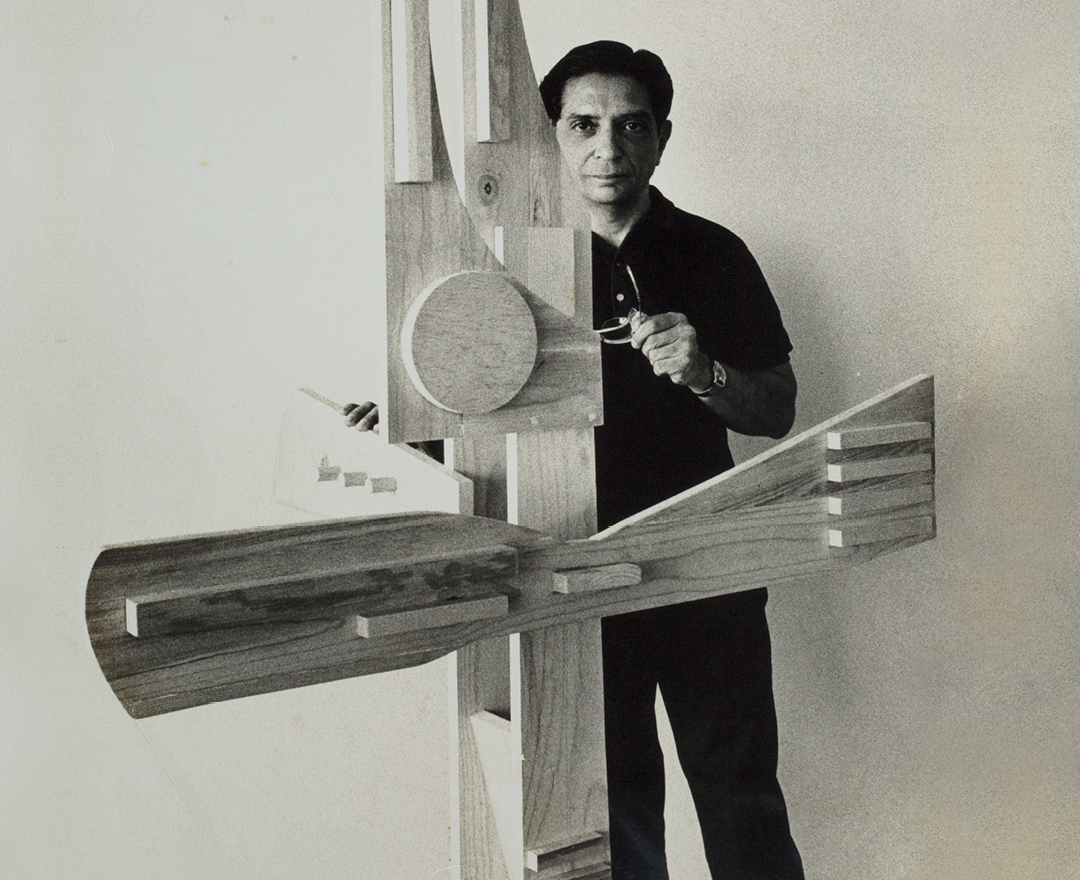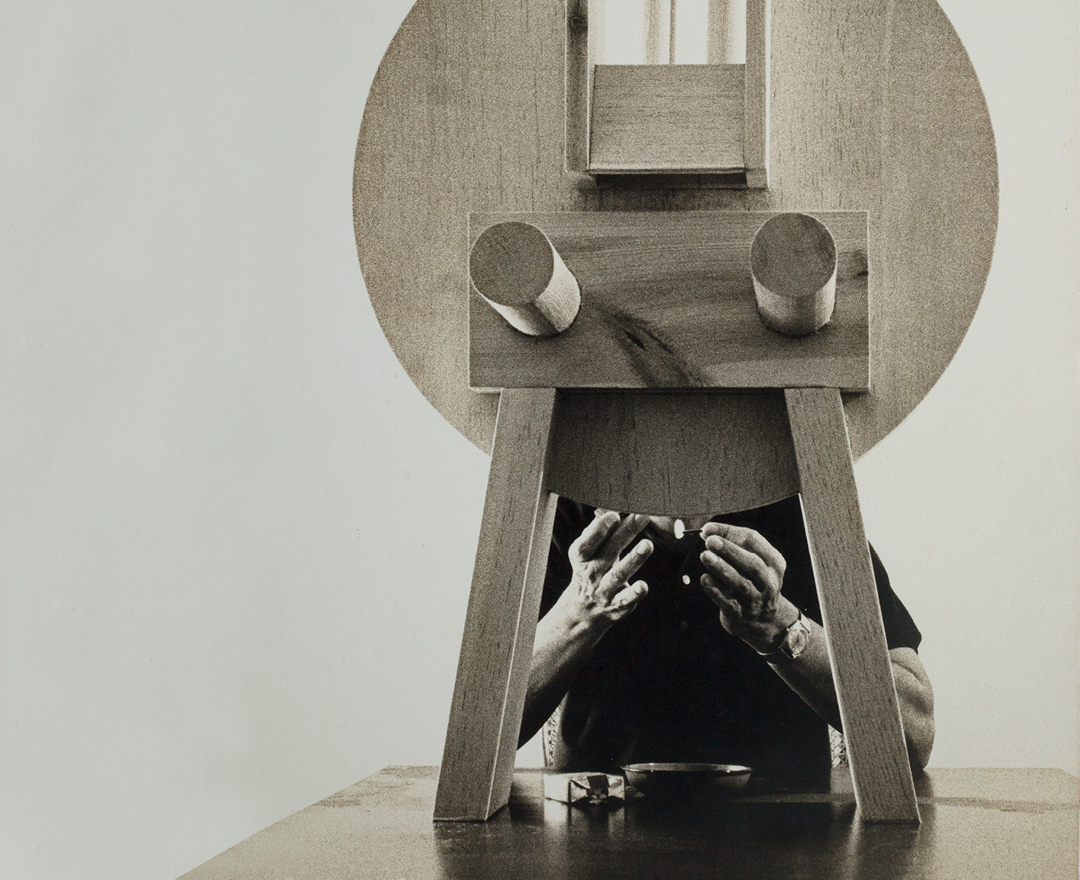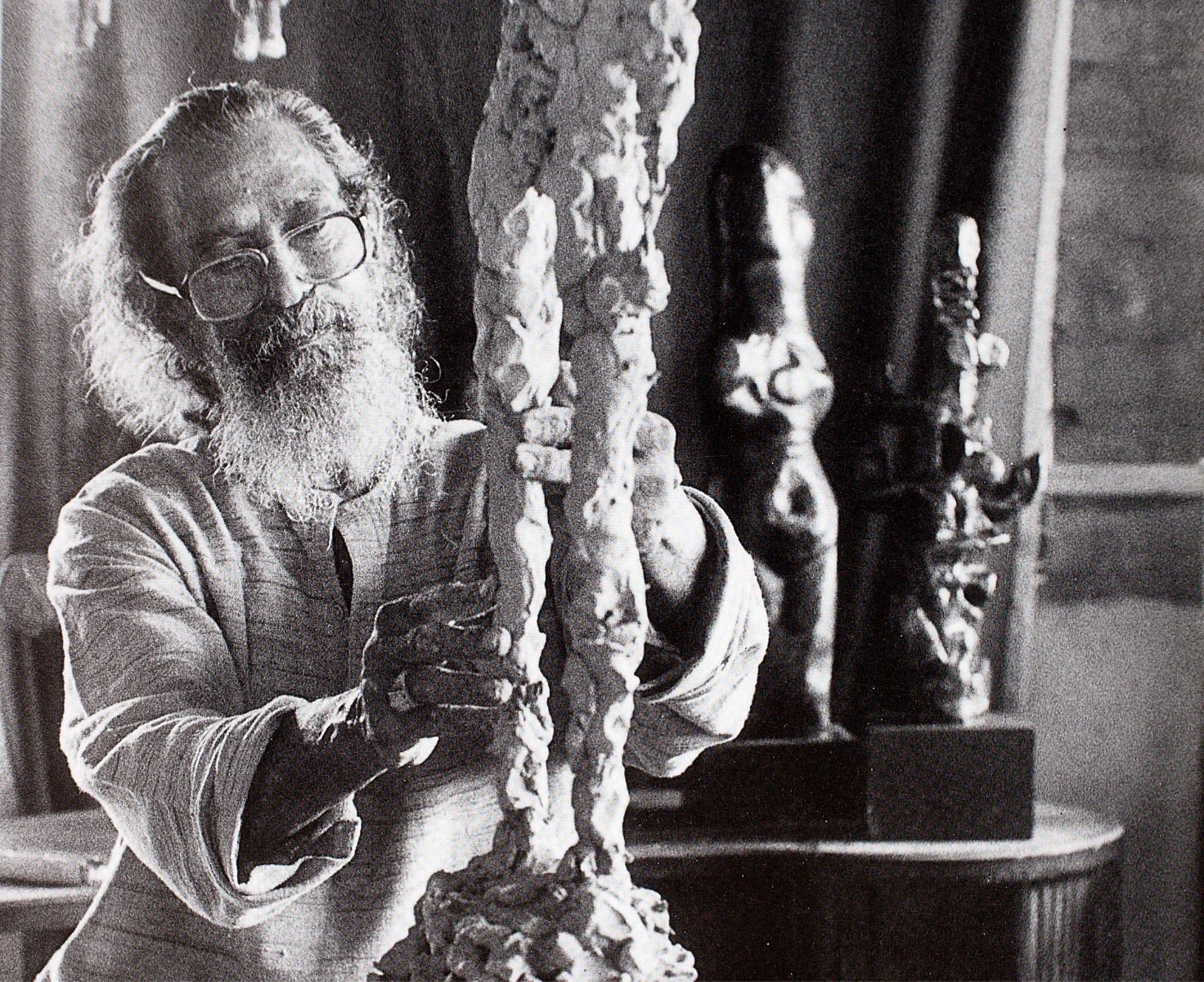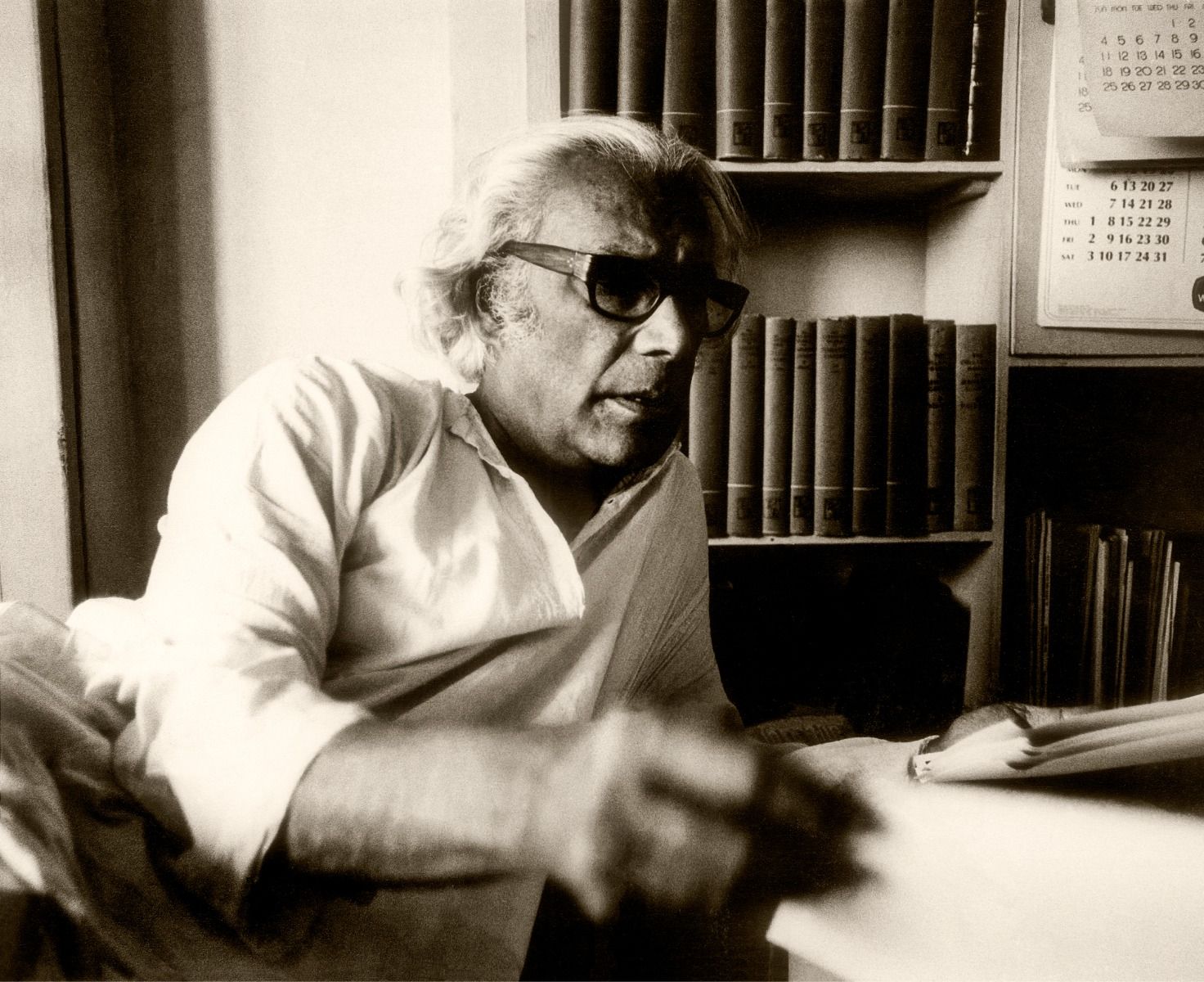1922
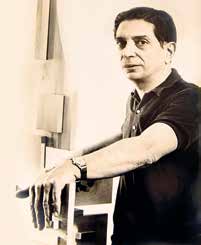
Is born in Bombay.
Late 1940s
Drawn to art, from 1945 onwards he begins to devote his time
outside work to reading, listening to music and drawing. He tries
his hand at painting but realises that colours hold no appeal for him
and he needs ‘more resistant material to express’ himself. He decides
on initial training under N. G. Pansare and begins to experiment with
sculptural art.
Chooses to carve directly in wood, stone and marble as opposed to
sculpting in plaster and preparing a mould for the final work. In his
works there is a tendency towards conventional idealisation of the
human form but gradually expressionistic and bold distortion begins.
to take its place.
After experimenting in wood and marble, he begins to explore metal
as a medium and executes works in small sizes.
Early 1950s
Too shy to get involved with artist groups, Davierwalla begins to
showcase his works in the annual shows of Bombay Art Society. His
early works carry influences of sculptors Jacob Epstein and Henry
Moore. But soon he discards these influences to strive for originality.
Is awarded a bronze medal at the annual exhibition of the Bombay
Art Society.
1952
Travels to Europe. Is greatly impressed by modern European
sculpture, and his works from this period register this influence.
Mid 1950s
Begins to experiment with genres and themes. On the one hand, works
carry suggestions of the derivative and the academic in an attempt
to forge a link with universal traditions. But in the same breath, he
explores Greek myth and Biblical lore, executing these works in semiabstract
style, examples of which are Christ Head (1953), Flagellation
(1955), Judas (1955). At the same time, he executes the head of Picasso (1953) in a language which is semi-academic.
1955
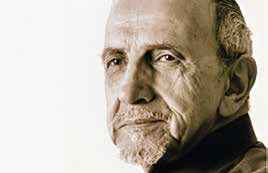
Is awarded the silver medal at the annual exhibition of the Bombay
Art Society.
Creates Crucifixion, initially as a backdrop for Ebrahim Alkazi’s
staging of T. S. Eliot’s Murder in the Cathedral. He goes on to make
other iterations on the same theme.
1956
Has his first solo show at Jehangir Art Gallery, Bombay.
1957
Wins gold medal at All India Sculptor’s Show and first prize at the
State Art Exhibition.
Executes Blind King/Oedipus in pink Agra sandstone.
Continues to experiment which leads him to execute a diverse body of
works carved in stone, wood and marble, assemblages of scrap and
industrial material, pieces cast in lead and bronze and others.
1960s
According to Dnyaneshwar Nadakarni, ‘A new subtlety of metaphor,
a poetic originality of symbol now begins to make itself felt in Adi’s
work. He reaches out from the area of mere physical perception to the
soaring heights of the metaphysical.’
1961
After winning critical acclaim, Davierwalla finally gives up his factory
job and turns to sculpture as a full-time profession.
1962

Executes Falling Figure on a commission from the Atomic Energy
Establishment. The huge sculpture is a muscularly conceived torso,
like a falling rider, the stance suggestive of a tentative setback with
the promise of hope and understanding of the power of the atom presaging the future.
1963
Participates in the Sao Paulo Biennale.
1963,'70,'74
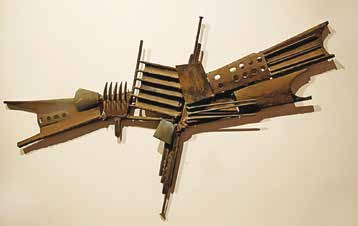
Executes three different versions of Icarus. These versions, spread
over a little more than a decade, can be seen as an evolution in
Davierwalla’s works from ‘the quintessential but still naturalistic to
the virginally abstract’. The wings play a metaphorical role in all
the three sculptures.
1965
Receives national award for sculpture at the annual Lalit Kala
Akademi exhibition.
Mid 1960s
Davierwalla discovers that scrap is an excellent material to work with.
He executes some stunning and thoughtful pieces like Don Quixote (1965) and Pathfinder (1965).
1966

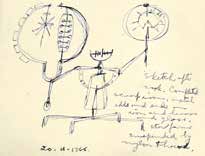
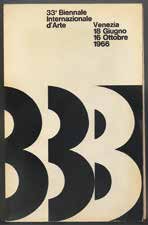
Creates the iconic sculpture Galaxy with metal and glass. It recalls a primitive, anthropomorphic representation of the
universe. Participates in the Venice Biennale.
1967
Executes Suryadev, a public sculpture installed in a Bombay housing project.
1968

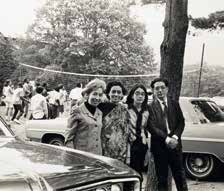
Is awarded the JDR 3rd Fund grant and tours America and Europe with his wife and daughter. This is his second big international trip and he develops a deep understanding of not just art but also of a variety of sophisticated material.
Executes Study in Light and Colour in Perspex, a type of plastic which he discovered during one of his foreign excursions.
He soaks in a lot of ideas and techniques during his American sojourn and executes some important works in small sizes—New York I and New York II (1968) and Circle and Cross (1970), Linear Analysis of a Standing
Figure (1970). Holds a solo show sponsored by Bertha Schaifer Gallery, New York.
1969

Executes Flame, possibly the simplest of his works by way of form
and metaphor. However, the work is laden with multiple meanings beginning with the simple concept of fire being sacred for Parsis; the metal construction with an upward projection is indicative of an
environment typified by technological reality. His works get included in a travelling exhibition in the U.S.
Late 1960s - Early 1970s

Begins to experiment with metal sculptures in big sizes in mediums
such as steel and aluminium. In the final decade of his life and work, Davierwalla executes monumental sculptures in welded steel. His themes and style remain the same as in his smaller works, but
there is, along with his struggle for scale, an attempt to achieve a transcendental symbolism.
1970
Executes Animated Suspension where he makes use of magnets in a
unique but appropriate context.
He executes large sculptures for the Atomic Energy Establishment,
Larsen and Toubro, and the Life Insurance Corporation. Participates in a group show organised by the Coray Gallery in
Zurich.
1975
Succumbs to cancer at the age of fifty-three in Pune.
2008-2009
‘Expanding Horizons: Contemporary Indian Art’, a travelling exhibition, is presented by Bodhi Art at Ravinder Natya Mandir, P. L. Despande Kala Academy Art Gallery, Mumbai; Sant Dyaneshwar Natya Sankul Art Gallery, Amravati; Platinum Jubilee Hall, Nagpur; Tapadia Natya Mandir Sports Hall, Aurangabad; Hirachand Nemchand Vachanalaya, Solapur; Acharya Vidyanand Sanskrutik Bhavan, Kolhapur; PGSR
Sabhagriha, SNDT, Pune; Sarvajanik Vachanalaya Hall, Nashik.
2016

A landmark show, ‘No Parsi is an Island’, curated by Ranjit Hoskote
and Nancy Adajania, with fourteen artists across hundred and fifty
years, opens at National Gallery of Modern Art, New Delhi. The
exhibition highlights how artists of Parsi origin negotiated the interior
world of that community and the cosmopolitan landscape that was
opening up and depicts these artists as working in contexts wider
than just their art.
